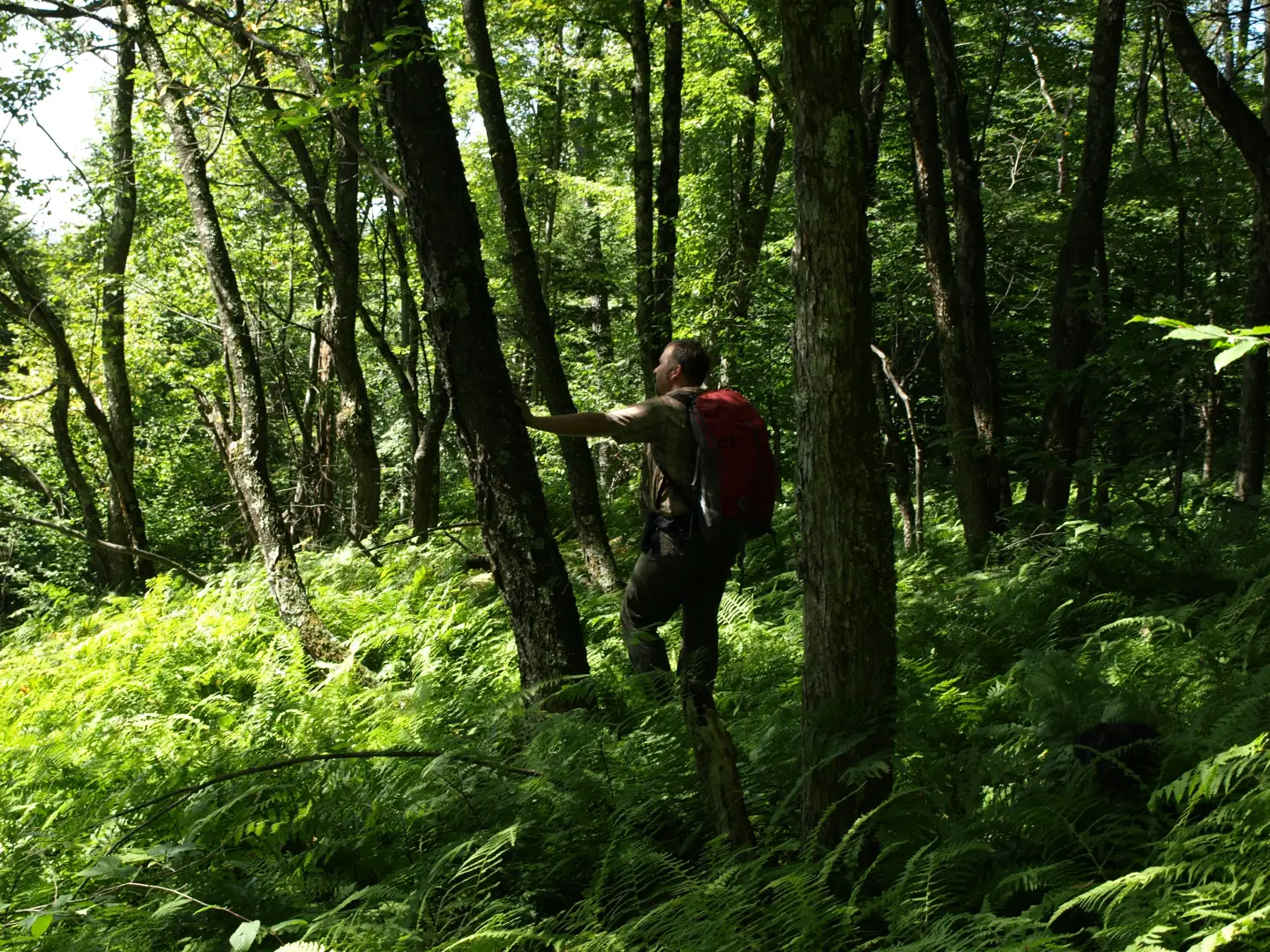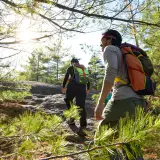How to pack your pack...
The question of what to bring on a summer hike is much more in-depth than one might think. Before you even try to answer it, first you have to hammer out a few details. Ask yourself: Where do I plan to hike? What’s the weather supposed to be? etc...
I have spent countless hours and miles in the High Peaks (and on much smaller outdoor excursions) and I think that I have a pretty good lock on what to carry. Also, as an Adirondack guide I have seen many times what works and what doesn’t. The impossible situations I have encountered along the trail are nearly countless. I am amazed that more incidences don’t happen in the backcountry than already do. I see hikers 4-miles down a trail wearing flip-flops, others on a 12-mile hike on an 80 degree day with only an 8 ounce bottle of water in their hand, others without backpacks, and some wearing cotton jeans in a rain storm. I have seen women pushing baby carriages in to Marcy Dam, and others in heels. I have even seen a man in shorts and Nike running shoes at 4000 feet in elevation in April, because it was 60 degrees in the valley. His legs bled from the icy crust of the remaining 2 feet of snow tearing them to sheds, and against my advice he pushed on to the summit, yet over a mile away.
Up to this day I get odd looks from people who ponder at the size of my day pack, and even question my motives. I don’t expect everyone to understand or follow my lead, but I want to offer an educated voice for interested hikers to read about what they should consider carrying. I am not saying that if you carry these items nothing will happen, things happen. Having this key gear can help remove some of the potential problems, and in some cases aid you if something does happen.
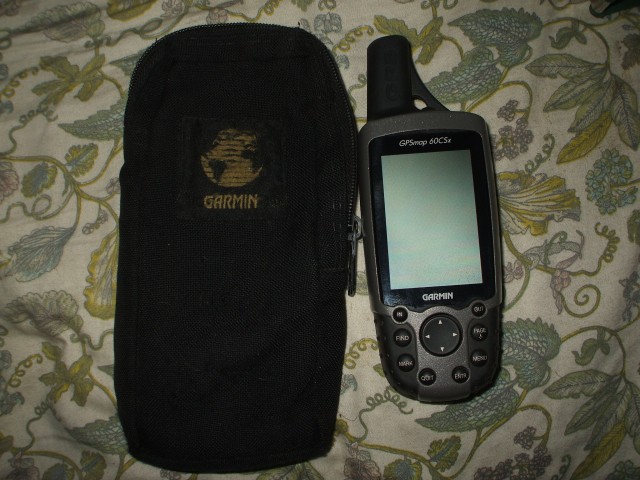
My feet hurt
First off you should look at your feet: you need to have on wool or synthetic socks. Cotton absorbs moisture and over time this moisture can cause friction and then blisters. Next you should have properly fitted and broken-in hiking boots, not steel-toed work boots. These boots don’t necessarily need to be huge, bulky, backpacking boots - but they can be if you like them. They should be comfortable and the proper size. You can opt for trail running shoes, which is close to that of a sneaker - essentially trail running is just hiking at a fast pace, you are on the same trail. Your shoes should be broken-in before you set off on any long extended outing. They don’t need to be waterproof, althought that is an option you may decide on. If you have sore feet, you will not enjoy your day in the woods, your feet really do call many of the shots.

What about cotton?
Cotton is a very touchy subject among the hiking world, and there is proof that cotton can kill. This is truer in the colder months and especially winter, but the same can be true during the right conditions during any month of the year. While in summer this is much less of a threat, and cotton actually works well in keeping the body cool, it can still be a danger. If you see threats of a rain storm or a cooling pattern during your day of hiking, I recommend leaving the cotton clothing at home and going with a merino wool or synthetic or polyester clothing line. If you are in soaked cotton clothing overnight, you could be in danger of hypothermia or worse. Temperatures in higher elevations can easily drop into the 30s during the height of summer.
So what’s in my pack?
Pack fitting is a totally different ball of wax (and I will help you out with that in a future blog) so for now let’s focus on what should be in the sack. First and foremost, your pack should be sized correctly, or at least comfortable to use - the shorter the hike, the less important a perfect fit becomes. In your pack:
·
Rain jacket - this can also be used as a wind barrier while on the bald summits or while taking breaks to stay warm.
·
Headlamp - I recommend this over a flashlight. Headlamps are hands-free and you may need your hands to descend a peak. This is also an emergency gear item to help for location or if an unexpected night in the woods is required. Having extra batteries and a backup headlamp is not a bad idea either.
·
Food - this includes snacks and meals. Keep in mind the length of the trip and always carry a bit extra just in case you need it. Don’t overeat as this can weigh you down and make your stomach upset, at times even causing cramps.
·
Water - the rule of thumb is 1-liter of water for every two hours you are out. If you don’t want to carry that much water, think about having a water purification or filter to fill up when you can. But don’t depend on water being at a source you see on a map.
·
Safety kit - this is your kit for unexpected circumstances that cause you to take extra measures and possibly spend a night in the woods. Use an old Nalgene bottle as a waterproof container. Pack it up with: matches and lighter, tinder (dryer lint works well), small candle, multi-tool, mirror, whistle, garbage bag, duct tape, emergency blanket.
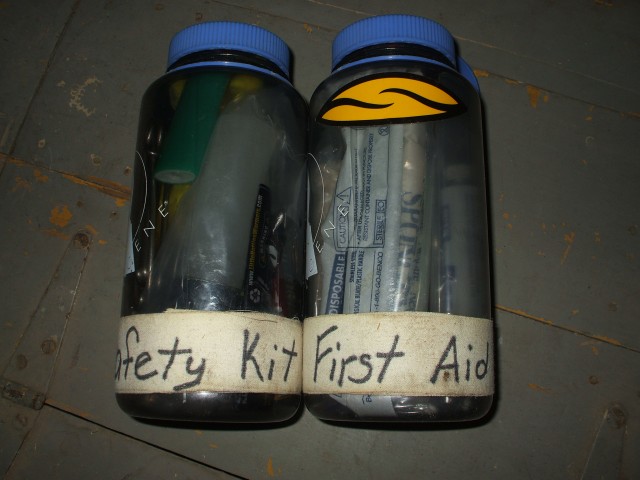
·
Dry socks and shirt - in a zip lock bag or dry bag, just in case you get wet and need to change.
·
Map and compass - this is an obvious piece of trail gear. But you need to know how to use it.
·
First aid kit - one per group is fine on this one. It should have some of the essentials, no one expects you to be a surgeon in the field. Be sure it has: bandages of all sizes, gauze, sling (coat will work too), antiseptic, anti-bacteria ointment, compression wrap. A “Sam Splint” is also a nice addition.
·
Toilet paper and trowel - do I need to explain?
·
Optional gear - rain pants, bandana, sun screen, bug repellent, cell phone (don’t depend on it, it doesn’t always work), camera, hat, GPS, trekking poles, gaiters, sun glasses, tarp, pack cover
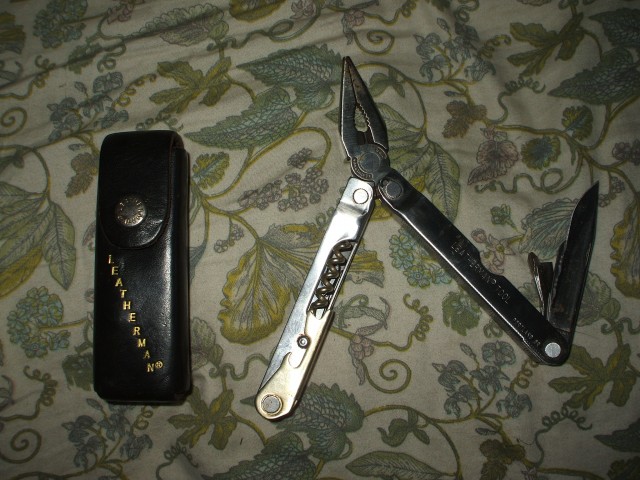
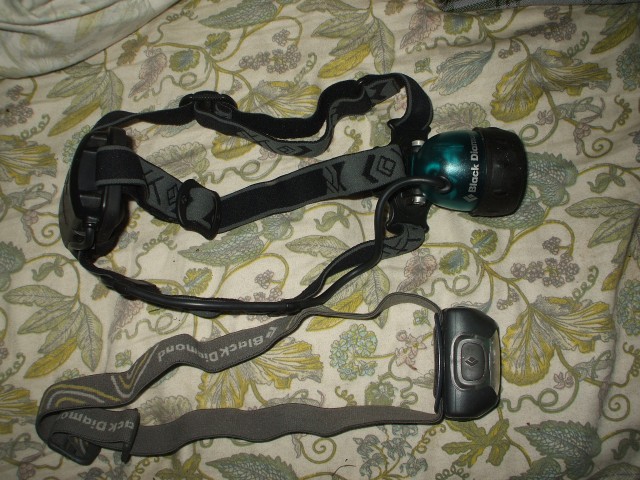
Not that this is an end all, be all, for hiking in the Adirondacks but I would like to think that everyone has some combination of the above when they go on a day trip.
For Pete’s sake, leave a note!!!
Even with all the gear in the world, if no one knows where you are and something goes wrong, it might not help you. Make sure you leave a note at home, with someone you trust, on the dash of your car, or even with the receptionist at the hotel, cabin, or campground that is acting as your cozy home away from home! Make sure to let them know where you are headed and check back in with them later. Remember to have fun and be safe and enjoy the Adirondacks so many of us call home. Further questions on gear, give me a shout, talk to a local guide or gear shop—someone is bound to know the answer, and don’t forget to check back on how to size up that pesky backpack - and maybe even learn a bit about trekking poles, camp stoves, sleeping bags, and much more.
